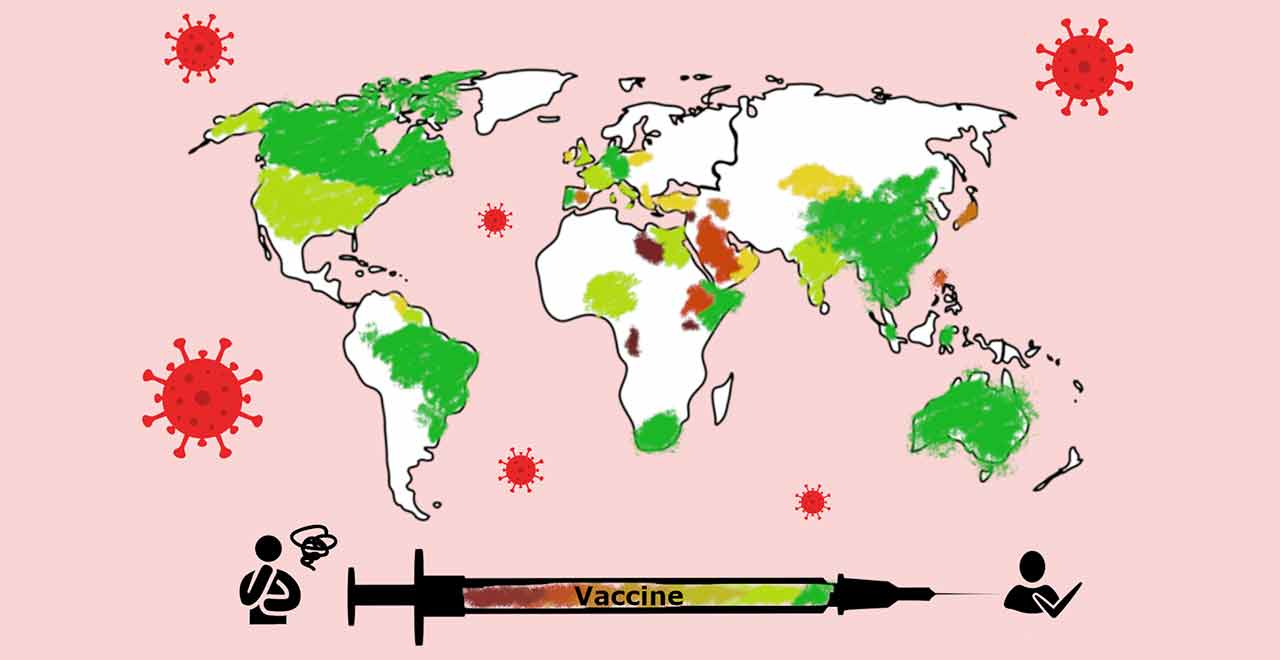In mid-July the Centers for Disease Control and Prevention (CDC) reported data that over 97% of people who enter the hospital in the US were unvaccinated. The situation is still the same in the US and in other parts of the world where the available data shows that unvaccinated people are still much more likely to contract Covid-19 and far more likely to experience symptomatic disease, while vaccines drastically reduce the risk of hospitalization and death from the virus. A new study from CDC’s COVID-NET shows that unvaccinated people are 17x more likely to be hospitalized with Covid-19 than people who are fully vaccinated.
Nevertheless, vaccine hesitancy rates remain high and range widely among different populations, across different countries, geographical and cultural
contexts. The international study, published by The Lancet group, EclinMedicine as a result of the collaboration between Università Cattolica, New York Medical College, University of Belgrade and University of Verona, reveals the contributing factors to attitudes, acceptance and hesitancy among the general population worldwide to receive the Covid-19 vaccines.
Vaccine hesitancy is a multi-factored phenomenon affected by cognitive, psychologic, socio-demographic, political and cultural factors. However, despite these differences, the main barriers contributing to vaccine hesitancy are similar. The most frequent ones are a fear of the safety and side effects of the vaccine, the vaccine’s effectiveness, and the fast pace of the vaccine’s development compared with previous vaccines.
Based on 209 studies conducted in different continents and in an international context (from the beginning of Covid-19 pandemic, the review reports results on vaccine acceptance rates from a total of 45 countries. Large scale studies conducted among several Arab-speaking countries report the highest vaccine hesitancy rates among this population (up to 83% in January 2021).
So, how to invite people to accept vaccines and improve the current state of the pandemic? Scientific literature reveals that we should find new and better ways to answer to people’s needs, and especially to address the four factors affecting people before feeling comfortable with and accepting Covid-19 vaccinations. These factors are time, awareness, personalization, and familiarity.
1) Time to think. The willingness of people to be vaccinated increases when they are offered to wait more time until they receive the vaccine. Huge scientific leaps and breakthroughs were witnessed in the development of Covid-19 vaccines in a timely manner, and this contributed significantly to increased hesitancy for the vaccine among a variety of populations across the world. The belief that the speed in which the vaccine developed translated to it being less safe is a common theme that contributes to high hesitancy rates. To improve vaccine acceptance addressing time-related hesitancy, people should have the opportunity to be more informed by pharma industries and healthcare authorities about steps in the innovation development process and about new possible products before their availability on the market.
2) Awareness of risks and benefits. A higher acceptance would be based on easy-to-understand and reliable information about advantages and risks related to what people are asked to do from health authorities. In fact, socio-demographic variables that are associated with low rates of vaccination uptake are consistent among a variety of geographical contexts and populations: individuals in low-income settings, racial and/or ethnic minorities, and those with lower education are the more hesitant sub-populations. More valuable and for-all-understandable scientific information, suitable to remove doubts and fear usually related to what is unknown, ignored, or blind, would reduce vaccine hesitancy and increase the acceptance of vaccination strategies.
3) Personalization about choices. People show personal preferences over different vaccine candidates. Given that the current vaccines on the market differ drastically by their mechanism(s) of action (e.g., mRNA-based vaccines vs. genetically engineered pathogens), the different mechanism in which a vaccine works may influence people’s opinion on it and hence acceptance/hesitancy levels. The main motivator or barrier determining people’s willingness to be vaccinated is the information regarding a vaccine candidate’s safety and efficacy compared to others available. This aspect becomes quite challenging when the internet and different forms of social media used today have not only allowed for rapid and ubiquitous sharing of information, but also of misinformation. However, besides the option of increasing official communication strategies to fight misinformation, the improvement of the ‘dialogue’ with people and ability to let them choose their preferred vaccine alternative could possibly increase vaccine acceptance rates.
4) Familiarity with providers. People ask for health professionals and providers involved in vaccination campaigns to be able to capture people’s trust and sympathy. The perceptions of knowledge and expertise, openness and honesty, concern and care, play a role in mistrust development. Minority populations, as well as those from low-income communities, express cultural strength and are more compliant to healthcare regulations when faced by a provider of their same cultural and/or community context. It is reasonable to make an effort for creating familiar settings around people helping them to get happily vaccinated: diversification and accessibility among all communities should be promoted by government entities around the world, including the provision of healthcare providers and workers of a given cultural context in identified vulnerable areas. Including the driver of familiarity with people and places among factors used to establish and promote vaccination campaigns would help to counteract vaccine hesitancy.
Vaccine acceptance/hesitancy has become an even more urgent topic that requires rapid actions to effectively create a herd immunity. People’s needs are the drivers of their behaviours. Thus, in populations where vaccination rates are low, and the vaccine acceptance is affected by human perceptions, we should evaluate the perceived needs of people to help create herd immunity against Covid-19. We should strengthen official communication because the perceived trustworthiness of a messenger plays a major role in developing trust. The issue of mistrust with authorities plays a drastic role in guiding people’s inclinations towards accepting vaccines. We hope that governments, healthcare systems and organizations, will use the framework outlined in this study, based on the most updated scientific literature, to adapt their strategies to reach vaccine hesitant populations across different demographic and geographical contexts.




